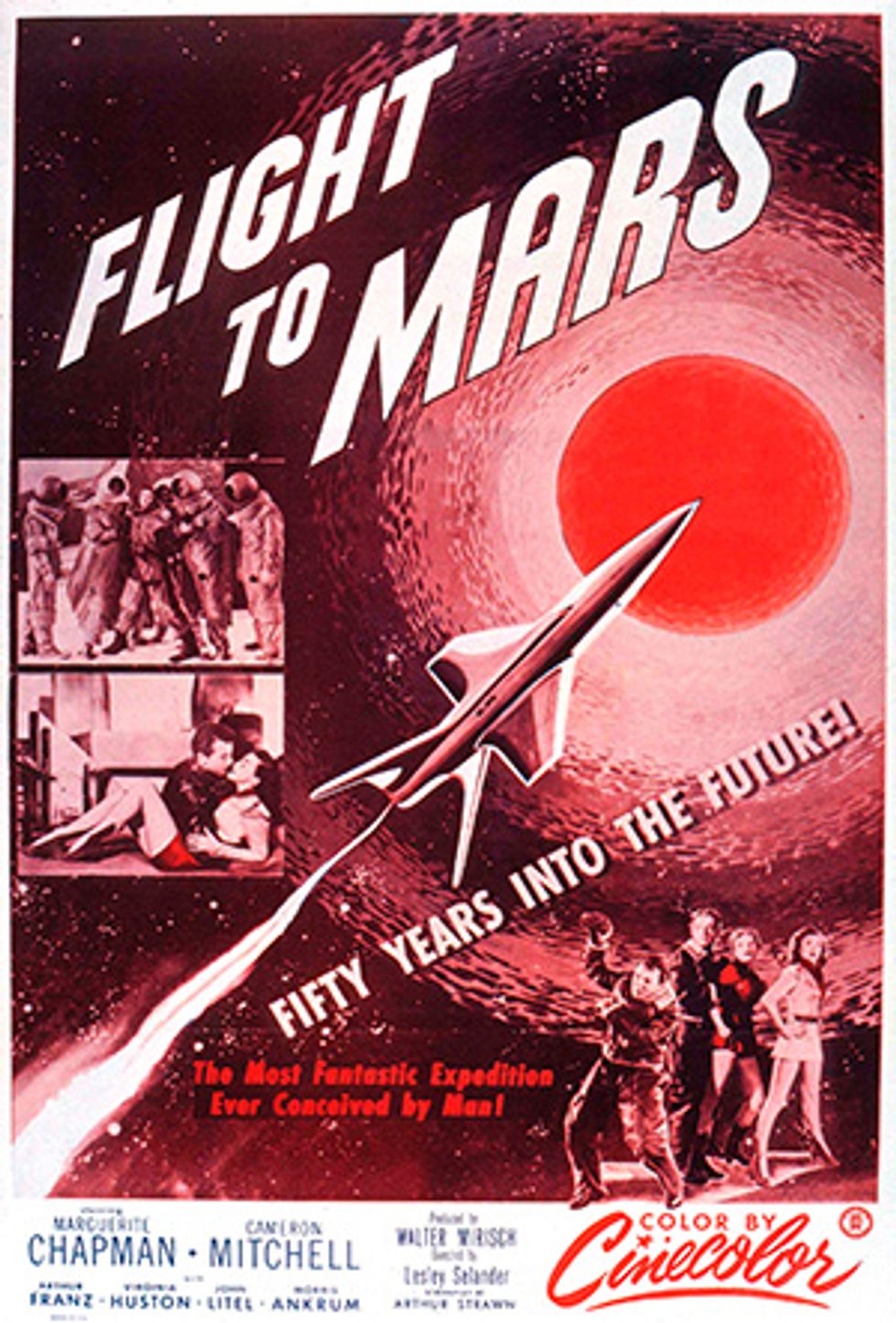At Last, the Great Martian Movie
More than a century after the first Mars movie, we finally have a really good one
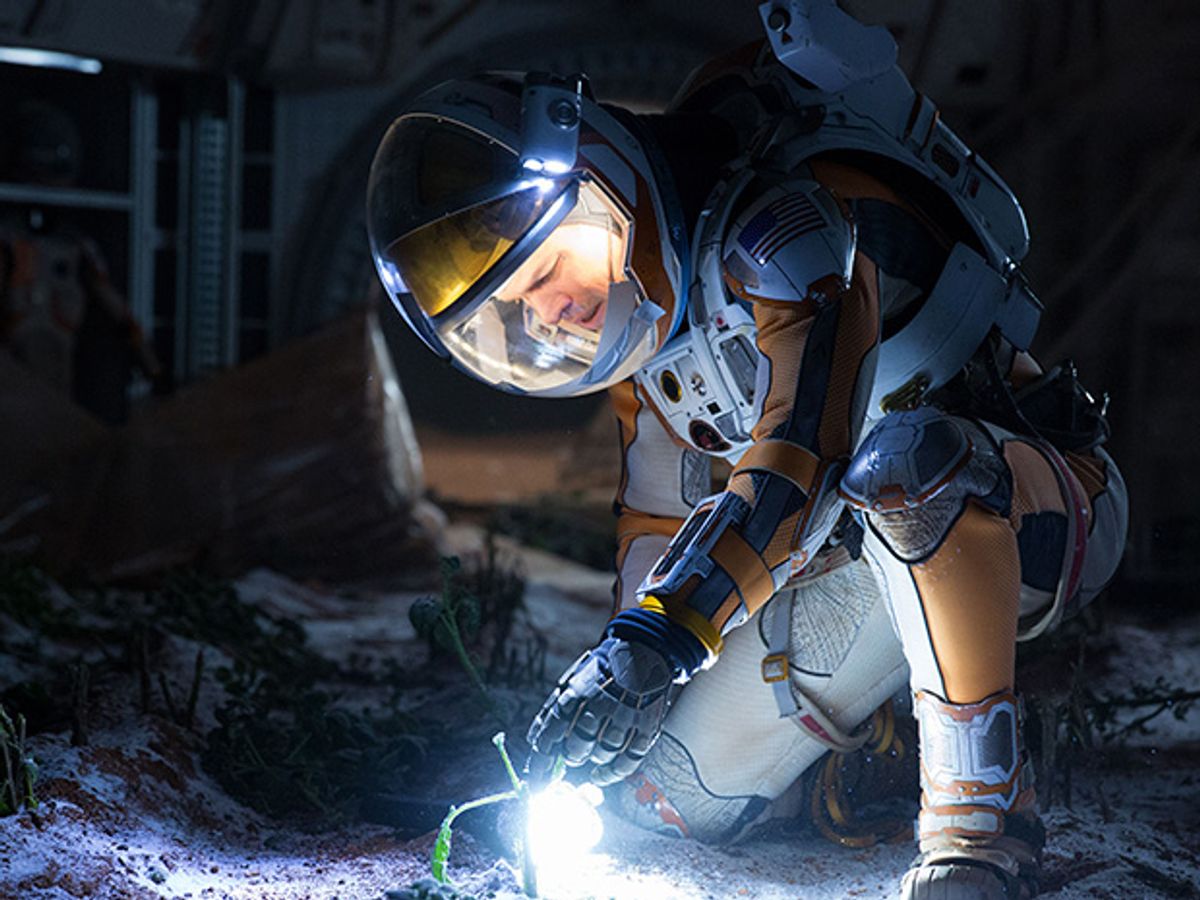
Hollywood and the planet Mars have had a long and complicated relationship. Tinseltown fell early and hard for the Red Planet, and it produced dozens of Mars movies over the decades. But though fecund, the partnership can hardly be called successful: Until now, the sum total of decent Mars movies was three (four, if you include a creaky but fascinating Russian silent).
With the release on 2 October of The Martian, the century-long affair has finally been consummated. The swashbuckling, big-budget Martian is not just the first outstanding movie set on Mars but also arguably the first time Hollywood has thrown serious money at a pure “hard” sci-fi story. At long last, the staples of cinematic sci-fi—space travel, derring-do, and survival on a forbidding extraterrestrial world—have come together in a believable, tightly compelling, and thought-provoking plot. No aliens needed.
But like a trip to Mars in a chemical rocket, this cinematic journey from 1910’s A Trip to Mars to The Martian has been long and noteworthy in itself. Scattered among the kilometers of celluloid are many odd, unpredictable, and poignant moments. And, most important, at critical junctures the journey has offered up fascinating insights into the human species—who we are, what we think our destiny is, and how those have changed over a tumultuous century of technological, scientific, and social advances.
Mars has intrigued earthlings for millennia, ever since sages saw the pink dot in the night sky and wondered why it wandered. The body of literature about Mars is rich, and a reasonable portion of it is intellectually stimulating. The movies are…something else.
At this point, let’s agree that a movie about Mars is one in which at least part of the plot takes place on Mars. Dozens of movies meet that criterion, but dozens more with the word Mars in their title do not. One of the earliest productions was A Trip to Mars, a 4-minute kinetoscope produced in 1910 by one of Thomas Edison’s movie companies. A magical powder enables a professor to float to Mars, where he is attacked by aggressive trees and tumbles onto the lip of a giant Martian creature. It can’t be called an auspicious beginning.

In the decades that followed, motion-picture directors used Mars and Mars voyages as a backdrop for adventures that could have been set just about anywhere, and also as a contrivance to develop themes that would resonate. That’s what directors do, after all. In post-revolutionary Russia, for example, a visit to Mars depicted in the silent film Aelita: Queen of Mars (1924) became an occasion to demonize capitalism and glorify bolshevism.
In the United States, where nearly all of these movies have been made, Mars changed with the times. In the 1930s, it was an alternative to the American West in cheesy serials featuring sets more exotic than cowpoke towns, and villains more exotic than unshaven men in black hats.
An exception is Just Imagine, one of the oddest films of American cinema’s adolescence, the brief transitional period between silent films and talkies, when the U.S. industry was also adapting to the Motion Picture Production Code imposed by the organization now known as the Motion Picture Association of America. Released in 1930, Just Imagine is a talkie, but it has intertitles, like a silent movie. The plot is wispy: A young man needs to impress government officials to marry the woman he loves. So he goes to Mars with his best friend and, it turns out, a stowaway who seems to have wandered into the movie from a vaudeville show.
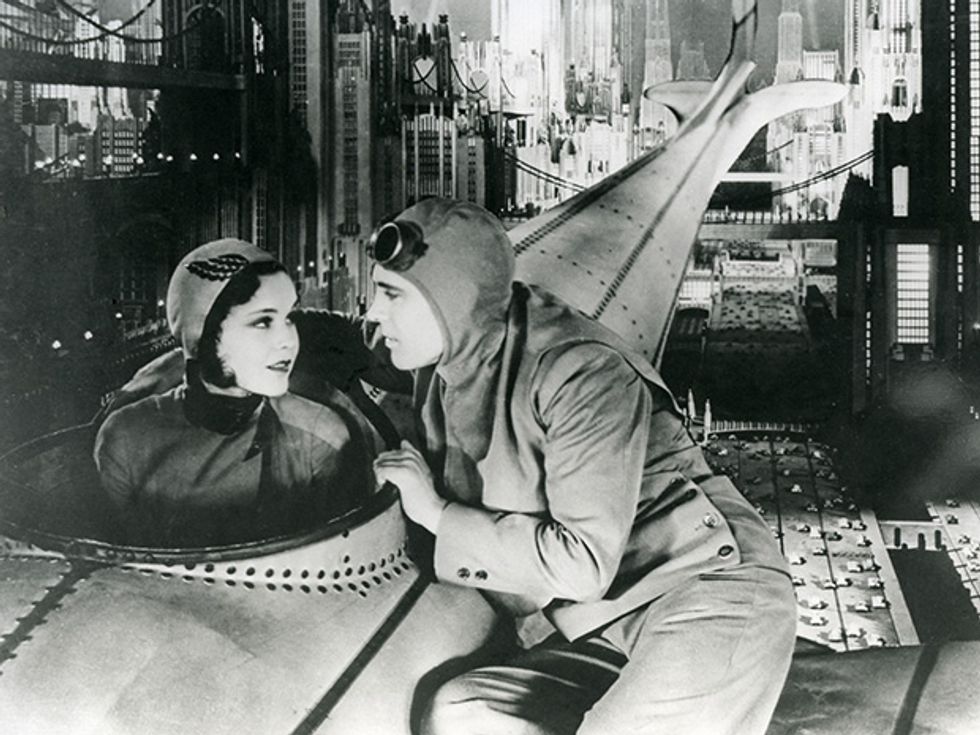
Upon arriving, the three immediately encounter Martians, who seem to differ hardly at all from earthlings. The female Martians, in big hair and shiny two-piece bathing suits, seem to be what on Earth 25 years later will be called Vegas showgirls. The acting is terrible and the dialogue is unbearable at times. But the art deco sets, effects, and costumes are all stunning for their era.
Mars then basically disappears from cinema for about two decades, reappearing in the golden age of sci-fi motion pictures, the 1950s. The best of those sci-fi films are either paranoid fever dreams inspired by Cold War dread— Invasion of the Body Snatchers (1956), The Thing From Another World(1951)—or they’re moralistic melodramas tinged by an infatuation with technology and/or a sense of wonder at the cosmos: Forbidden Planet (1956), The Day the Earth Stood Still (1951). Unfortunately, none of the Mars movies of the 1950s fits into either category.
Flight to Mars (1951) was shot in five days using borrowed costumes, sets, and even sounds. Flight follows the standard trajectory: Earth ship with attractive coed crew lands on Mars and finds a civilization of people who look exactly like earthlings and even speak English. But beneath their padded tunics, these Martians harbor Earth-invasion plans, because their world is dying.
Much of the plot and dialogue is so ridiculous that the film is surprisingly enjoyable today as an unintentional parody of ’50s sci-fi pictures. The movie has precisely one clever touch: The Martian heroine is named Alita, an apparent homage to the 1924 Russian movie’s Queen Aelita.
Invaders From Mars (1953), a compelling piece of Cold War paranoia rendered cleverly in primary colors, doesn’t have anything to do with Mars. Red Planet Mars (1952) follows rival Cold War radio engineers, one of whom makes contact with a Martian civilization. It starts promisingly but degenerates abruptly into inanity when viewers are asked to accept that God has chosen Mars from among the universe’s many celestial bodies to be his base from which to proselytize by radio. At least the inanity is revealing: Time.com recommends the movie “as a rear-view mirror into the roiling national psyche of the ’50s” U.S.A.
And then come the 1960s. But before we get to them, consider this idea for a Mars movie plot. Because of a mishap, a muscular, resourceful, and geeky U.S. astronaut finds himself stranded on the Red Planet, where he must improvise brilliantly to feed and shelter himself. He survives calamitous mishaps and setbacks before undertaking a long and perilous journey to a rendezvous that could save his life and get him back to Earth.
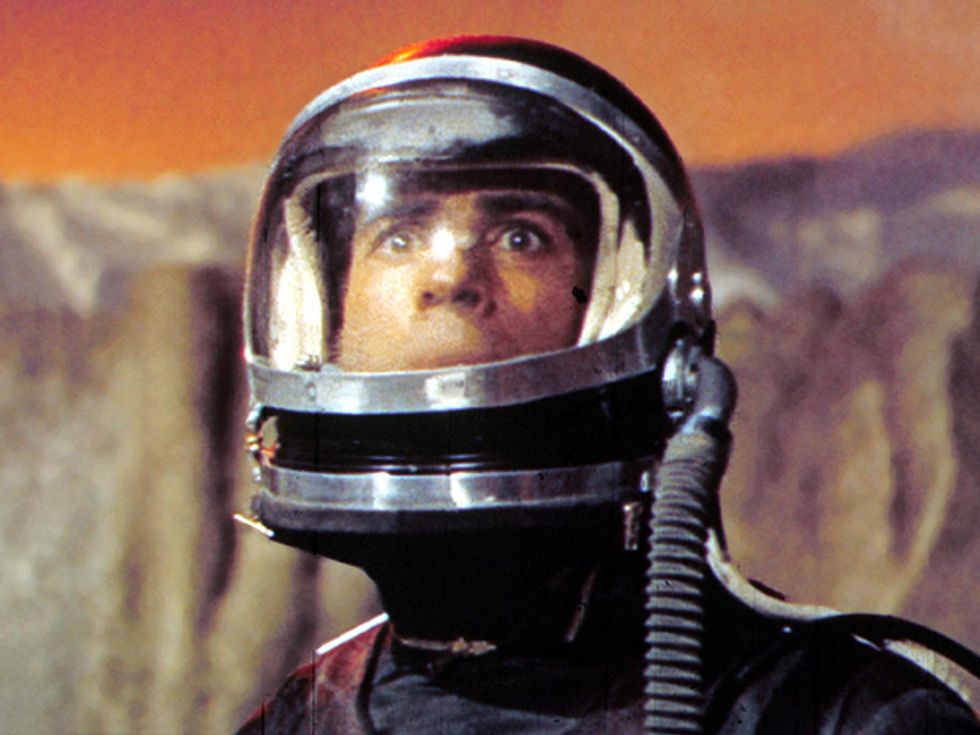
Sound familiar? It’s not what you’re thinking. Fifty-one years before The Martian there was a different Martian, and it was Paul Mantee in the movie Robinson Crusoe on Mars.
Crusoe, released in 1964, has the distinction of being the first decent Mars movie. It was one of a pair of movies, each based on a beloved fable, that were inspired by the surging U.S. space program in the 1960s. Crusoe and The Wizard of Mars (1965) are interesting partly because they were the last gasp, so to speak, of the cinematic Mars where people could walk around in civvies, breathe through little thingamabobs, and happen upon complex life.
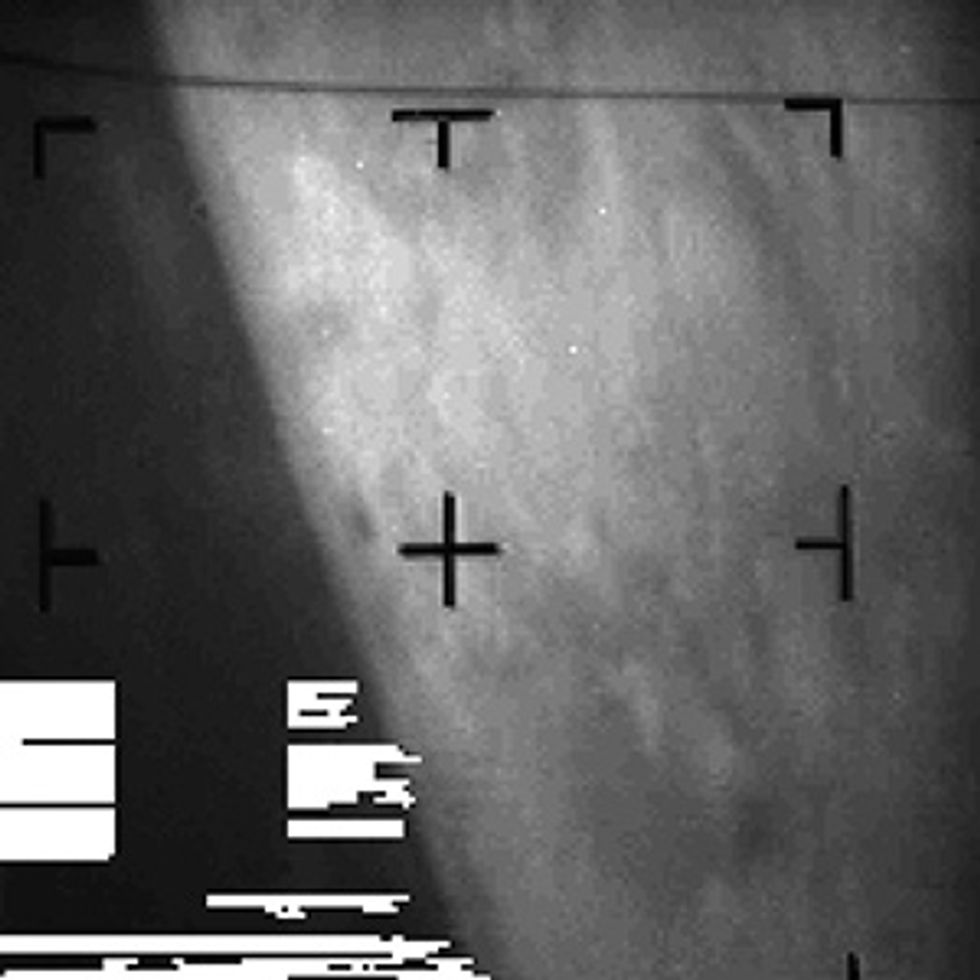
In July 1965, the U.S. space probe Mariner 4 flew by Mars and began sending back the first close-up pictures of the planet. They showed a cratered world that was airless, waterless, canal-less, and devoid of the sort of life that could green-light a script.
At that point, strolling around on Mars in street clothes becomes a no-no. Also out: Martians that seem distinguishable from humans only in their more-daring fashion choices.
Not surprisingly, Mars movies pretty much disappear again for the next 25 years, except for a few cinematic curiosities and a couple of TV series. The unintentionally funny 1967 throwback, Mars Needs Women, is about a dying race that needs nubile earthlings with whom to breed. Mission Mars (not to be confused with Mission to Mars), from 1968, has absolutely nothing to recommend it.
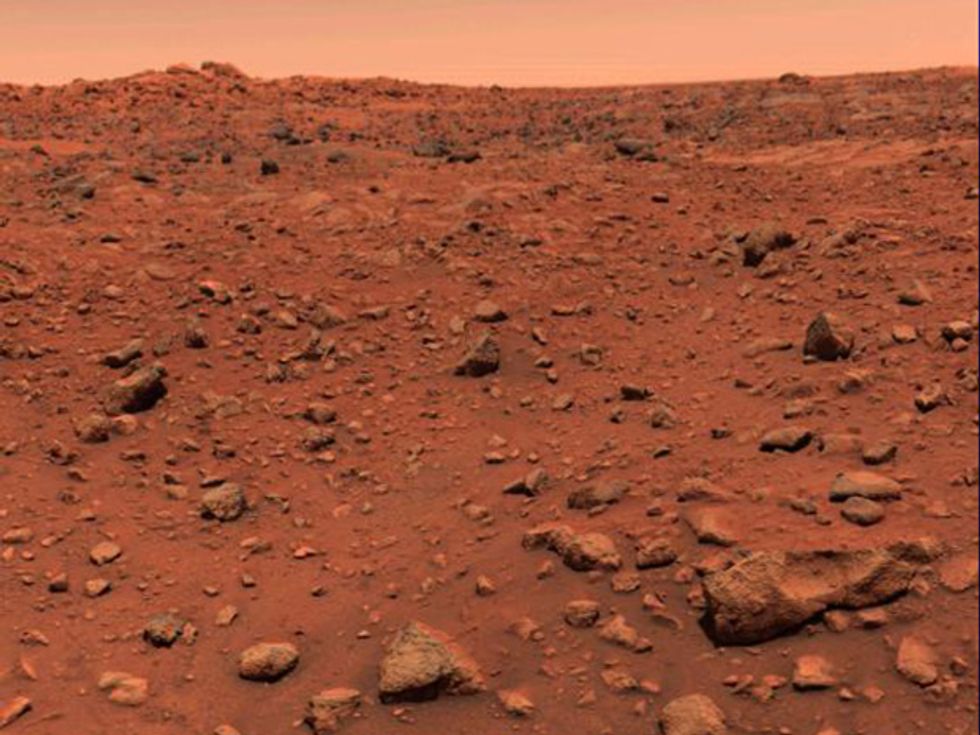
In 1976, the U.S. Viking landers do their thing, and interest in Mars resurges hugely. But not a single decent Mars movie comes out of it. In fact, Viking’s sharp images of beautiful, barren Martian plains probably did more harm than good. After Viking, the obviously fake Mars images of cinema lost much of their power to captivate. Or even to be taken seriously.
To sum up: No agreeable environment, no plausible indigenous antagonists. That left screenwriters with very few options in terms of the stock plot outlines that inspire confidence among movie executives and producers. You could have some sort of a chase, or you could have your crew killing each other off for various reasons, or you could combine them into some sort of peripatetic killing spree.
But in the 1970s, writers and directors of serious science-fiction films weren’t interested in chases or killing sprees. They were grappling with earthly social issues in high-concept films like Soylent Green, Logan’s Run, Silent Running, and A Clockwork Orange. The only notable motion picture with any connection to Mars is Capricorn One (1978), a post-Watergate conspiracy-theory vehicle centered around U.S. officials faking a trip to Mars to avoid national embarrassment. Nobody goes to Mars. In fact, that’s the point. (The movie rings ironically today in that it costars O.J. Simpson in a role in which he takes part in a cover-up.)
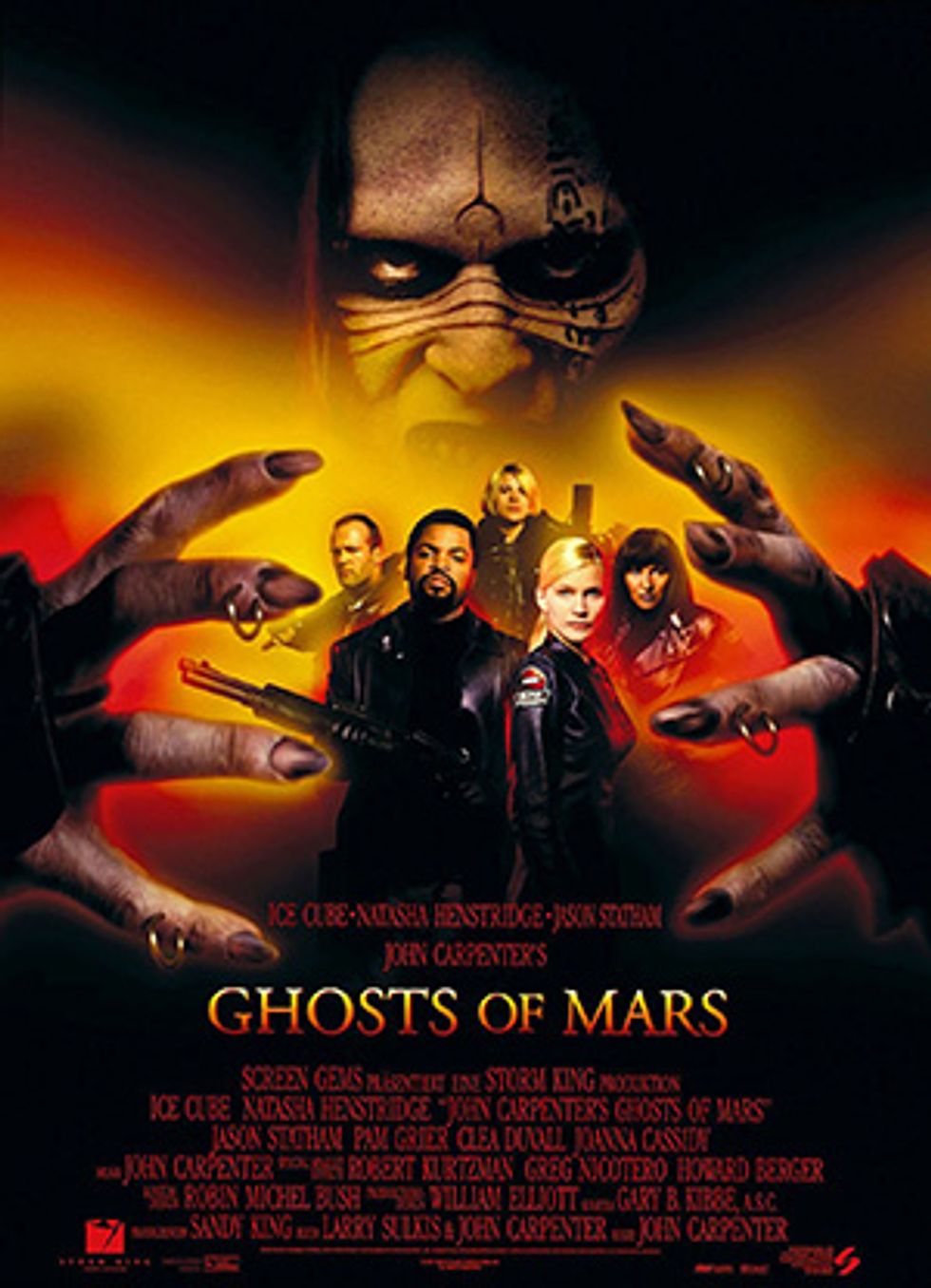
But like star-crossed lovers, Mars and Hollywood can’t stay apart indefinitely. Between 1990 and 2001, half a dozen more Mars movies come along. These were Total Recall in 1990; Escape From Mars in 1999; Red Planet and Mission to Mars in 2000; and, in 2001, John Carpenter’s Ghosts of Mars, as well as a low-budget Spanish production called Stranded.
By this time, in the West, climate change has replaced communism as a big, resonant, and thematically rich preoccupation. And, happily enough, it turns out that it’s an excellent fit for Mars movies. Climate change’s silver lining is terraforming, the notion that humankind could change lifeless planets like Mars and Venus into something like Miami Beach in a relatively short period of time.
In Ghosts of Mars, terraforming is just a piece of backstory that lets the actors, notably former supermodel Natasha Henstridge, run around on Mars in tight sweaters (that is, we’re back to the 1950s again). But terraforming is an integral part of the plot, albeit a contrived one, in Total Recall, Red Planet, and Stranded.
The best of the bunch is Total Recall, directed by Paul Verhoeven and based on a story by Philip K. Dick. It stars Arnold Schwarzenegger as a former counterrevolutionary who’s had his memory erased and is trying to figure out who he is and who his enemies are on a Mars wracked by revolution. Like all of Verhoeven’s movies, it is compulsively watchable and has plenty of violence and sleaze. There’s also a femme fatale, played by Sharon Stone.
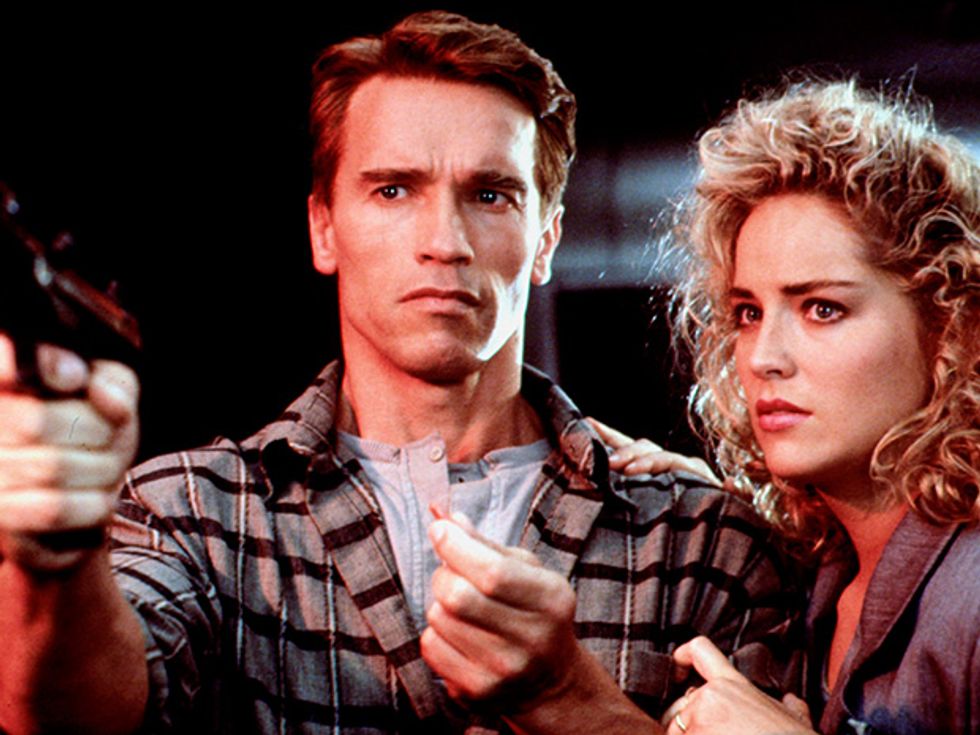
The film explores issues of identity, as in this exchange between Schwarzenegger’s character and Stone’s, just after they’ve tried to kill each other:
Schwarzenegger: “If I’m not me, who the hell am I?”
Stone: “Beats me. I just work here.”
Red Planet is the third decent Mars movie in the pre-Martian era. The plot isn’t complicated. Astronauts stranded on the planet fight with each other and with a robot gone murderously haywire as they try to stay alive on, and eventually escape, Mars. The effects are good—the insane robot, AMEE, was nothing but software, for example. And the story has some deft twists and shocks spaced nicely, along with very good performances from an outstanding cast.
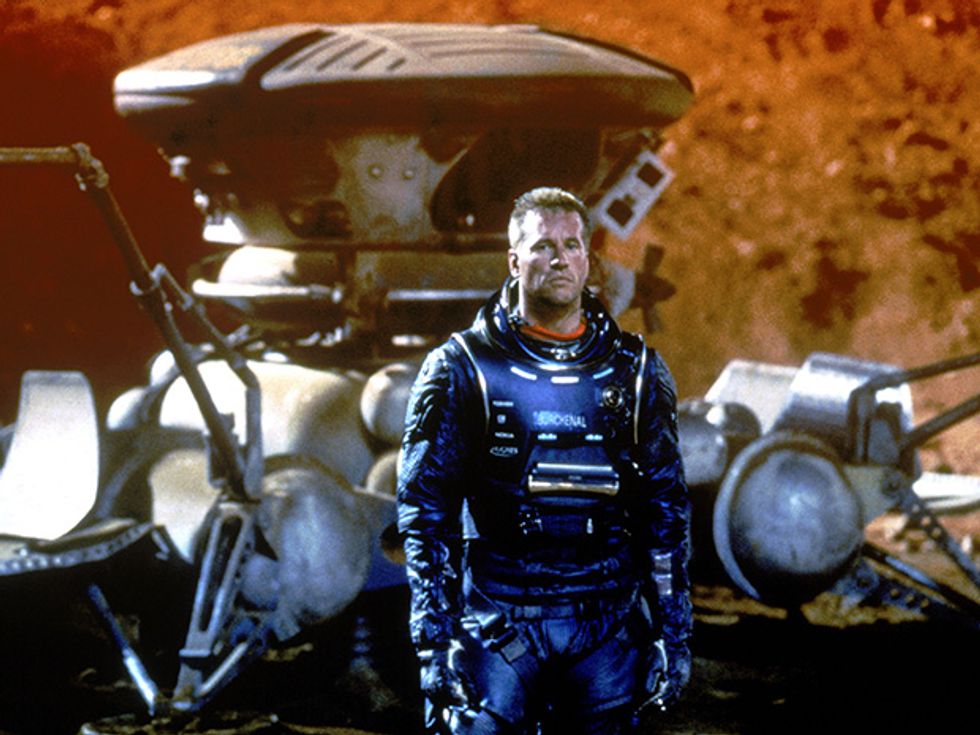
Then there’s another dry spell. In 2012 Disney releases John Carter, based on Edgar Rice Burroughs’s 1917 novel A Princess of Mars. It’s fantasy rather than sci-fi, and it’s so bad that even some of the phrases that critics used to savage it have become storied: a “giant, suffocating doughy feast of boredom,” wrote one. One of the few places it was well received was Russia.
And then, three years later, The Martian, the best Mars movie so far, finally arrives. How did it happen? For one thing, the movie has in Ridley Scott not just a good director but one who proved himself adept at handling science fiction in the films Alien (1979) and Blade Runner (1982). For The Martian, Scott had nearly ideal material to work with: a book, by a mild-mannered computer programmer named Andy Weir, that is so inherently cinematic and so rich in details that it’s hard to imagine a bad movie emerging from it.
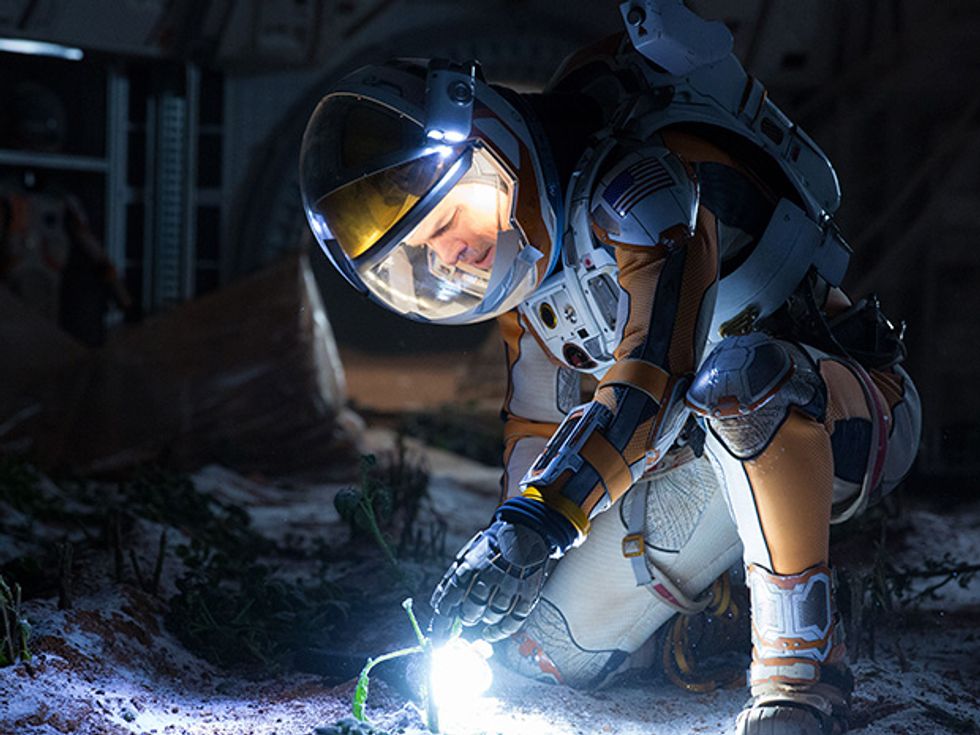
[ Spoiler alert! Skip this paragraph if you haven’t seen the movie and plan to.] In fact, the film preserves the book’s one obvious scientific cop-out. Although a sandstorm on Mars—whose atmospheric pressure is 0.6 percent of Earth’s—would generate very little sound and essentially no fury, the story nevertheless includes a sandstorm of screaming, biblical ferocity. Of course, faced with a choice between cinematic expediency and technical or scientific accuracy (or pretty much anything, actually), Hollywood hotshots always go for cinematic expediency. That’s partly why they get the big bucks.
Such a quibble notwithstanding, The Martian heralds a new direction in Mars movies. It eschews chases and killing sprees for a castaway plot, retooled for a tech-obsessed era. In times when we are accustomed to enjoying dazzling technological breakthroughs in our actual lives, it gives us a hero who conjures them over and over again to stay alive in a hostile wilderness.
In this aspect, the movie and the novel fit into a long cultural tradition, notes Robert Crossley, professor emeritus of English at the University of Massachusetts and the author of Imagining Mars: A Literary History (Wesleyan University Press, 2011). The notable thematic aspects of the movie are “its wilderness setting, plus the last-man theme,” says Crossley. He points out that the first English-language novel set in the future was Mary Shelley’s The Last Man (1826), published eight years after Frankenstein. Since then, this last-man motif has driven many sci-fi works, in which the protagonist must survive alone “by his wits, imagination, and technological expertise,” Crossley notes.
If The Martian does well, it could usher in a golden age of Mars movies, he believes. “We’re in a really interesting time” in science fiction literature, he says. “The smartest science-fiction writers want to be as scientifically plausible as possible”—a situation that could fuel future movie productions in which humans attempt to survive and settle on the great lonely wilderness of the Red Planet. Think Westerns, but with CO2 scrubbers, mini nukes, and hydroponic food.
Crossley notes, too, that there is already a sizable body of work on this theme, much of it published in the 1990s. For example, Kim Stanley Robinson’s trilogy on Mars is considered by some to be the best works ever about the planet. Alas, plans for productions based on the trilogy have come and gone like CEOs at Twitter. (In the latest, Spike TV announced this past January that it had hired “Babylon 5” creator J. Michael Straczynski to produce a script for a TV series based on the novels.)
Crossley also touts the cinematic potential of a little-known 1994 novel, Climbing Olympus. In the story, by Kevin J. Anderson, people altered to live on Mars struggle against a corrupt plan to colonize it. From the same general period as the Robinson and Anderson books came many other worthy novels, including ones by Greg Bear, Gregory Benford, Ben Bova, and Paul J. McAuley.
Maybe the best reason to anticipate more excellent Mars movies is the planet’s pull on something deep within us. Having emerged from our myths, it still feeds our fantasies. It’s the most interesting motif left in archetypal dreams of escape and adventure in strange, vast realms, of human rejuvenation and transcendence through exodus and hardship.
The Red Planet isn’t home to charismatic life. But it will be when our descendants, having conquered it, discover that it has transformed them into something new.
This article is an updated version of “Waiting for the Great Martian Movie,” posted 19 June 2009.
